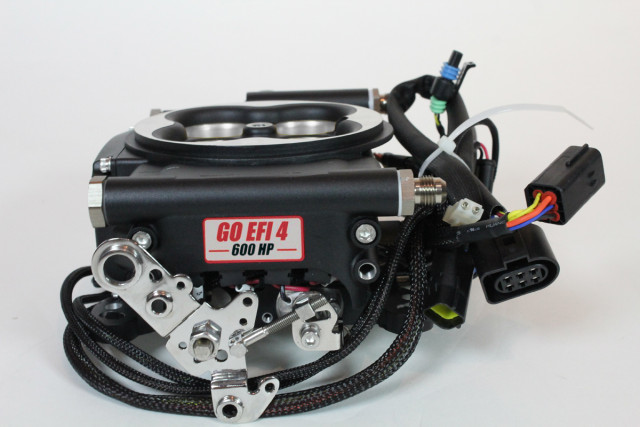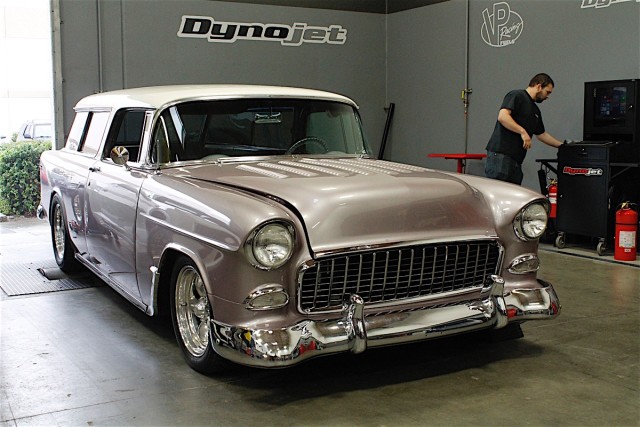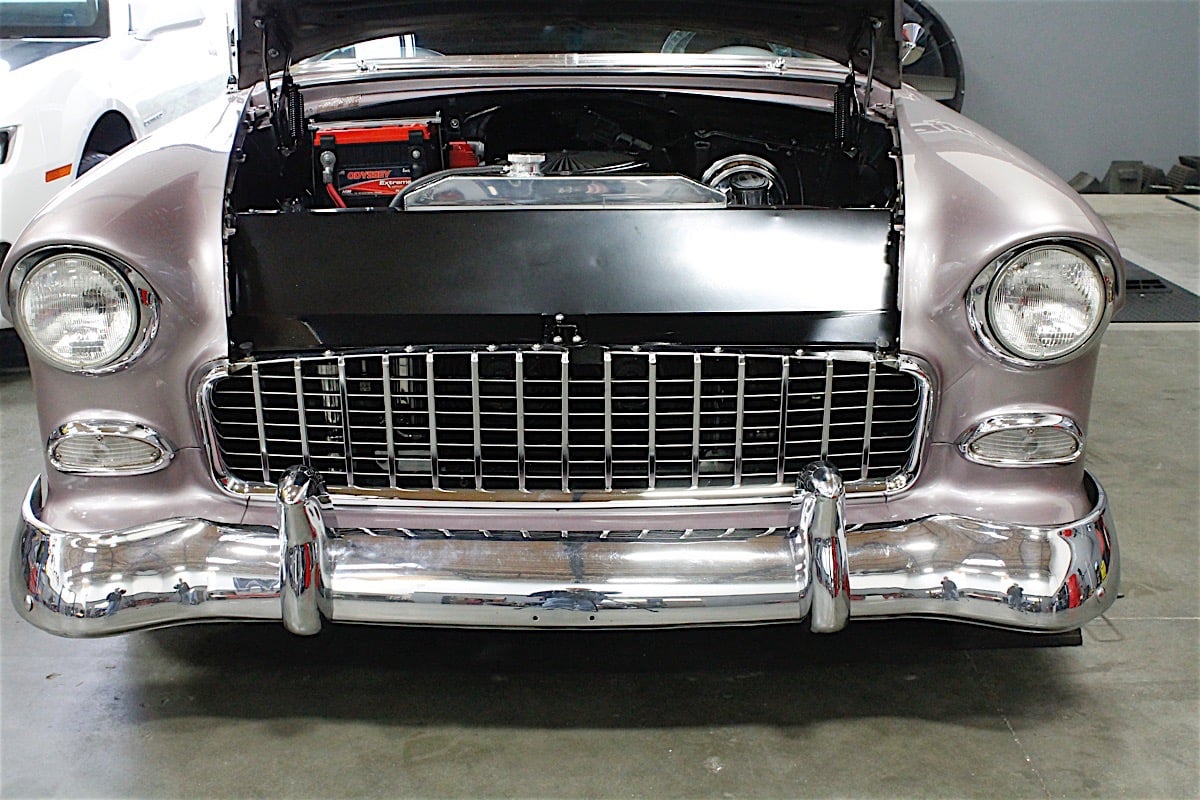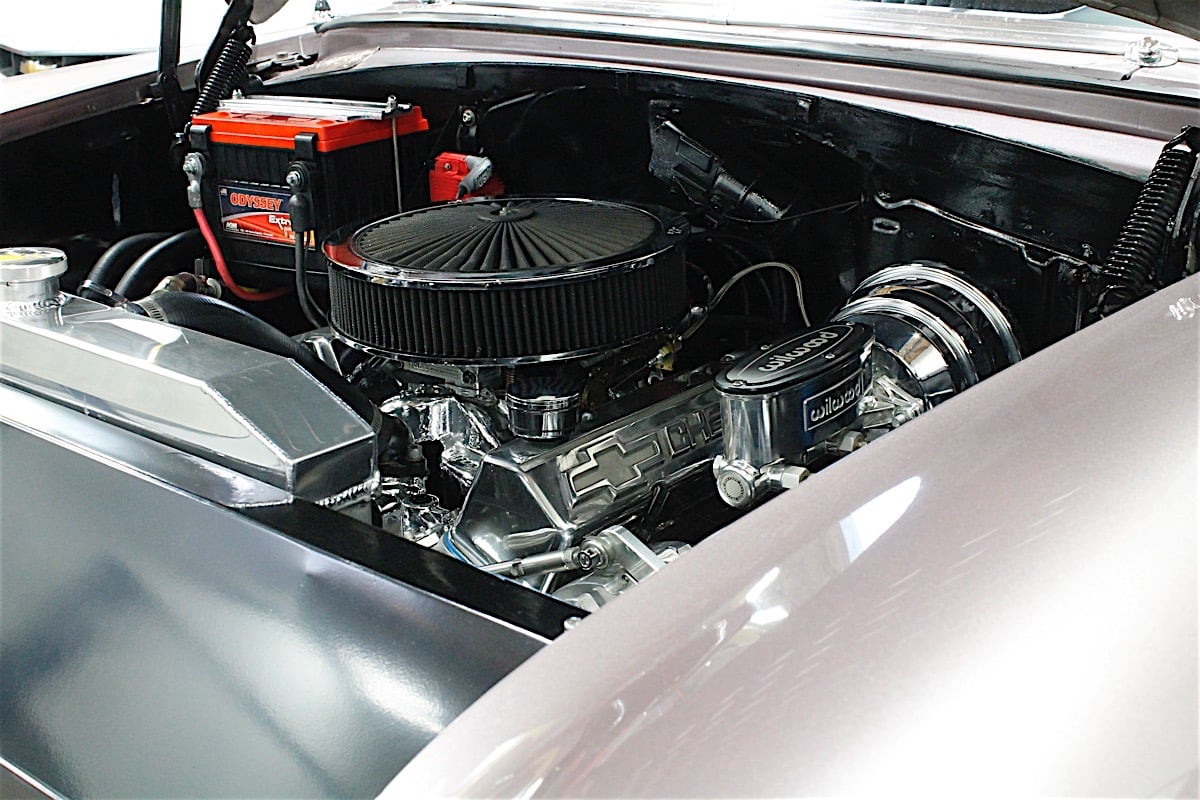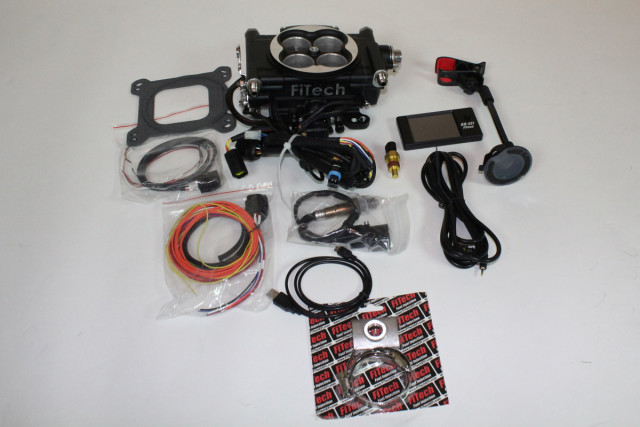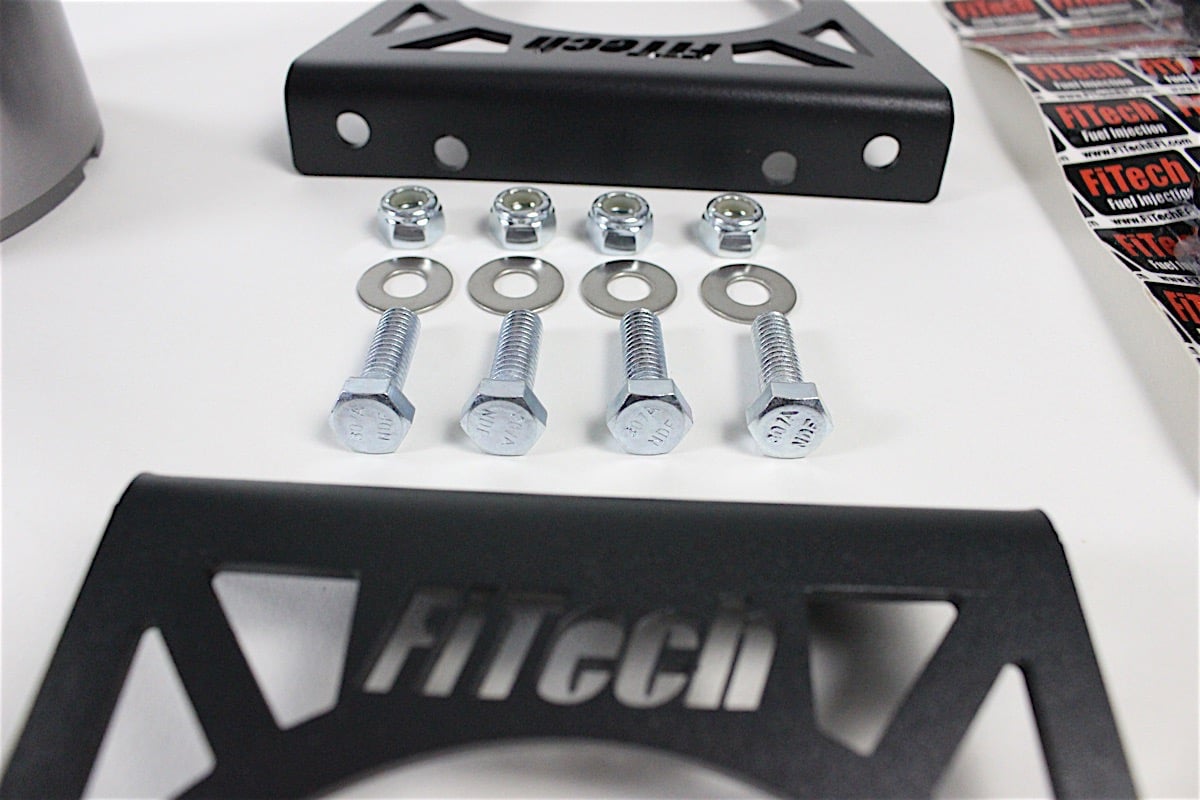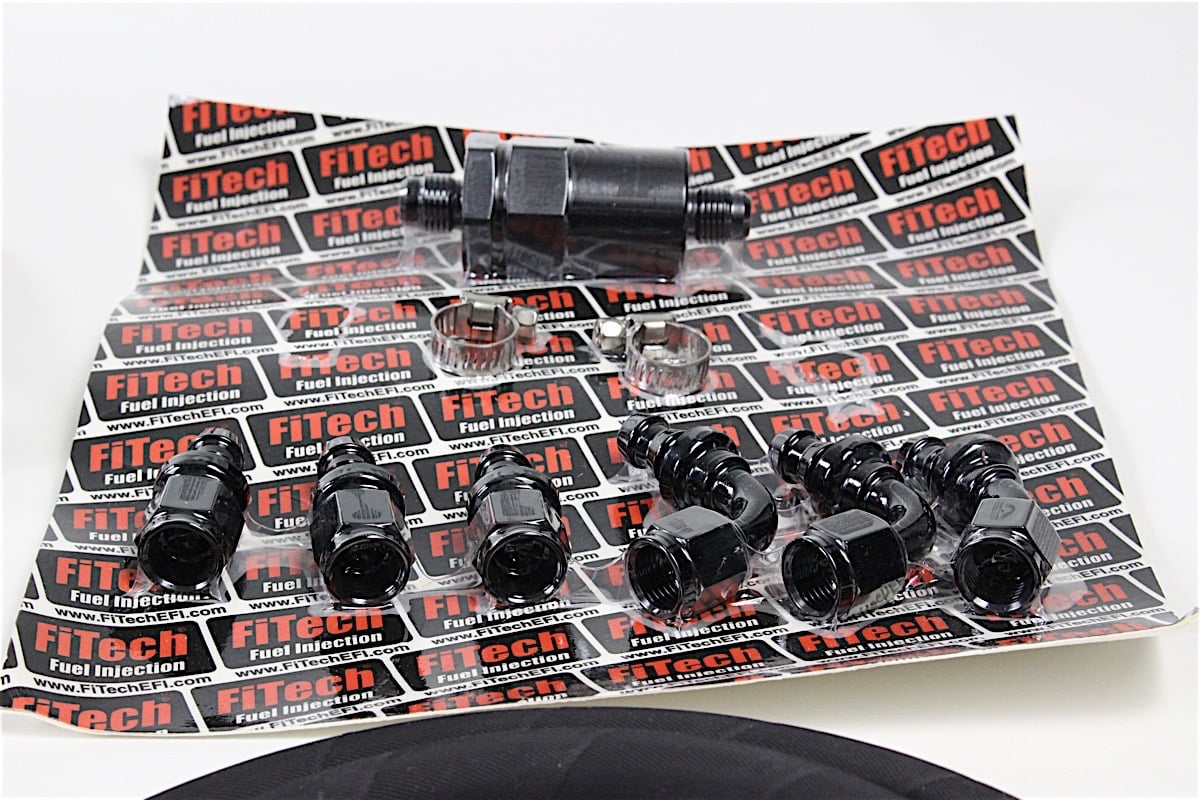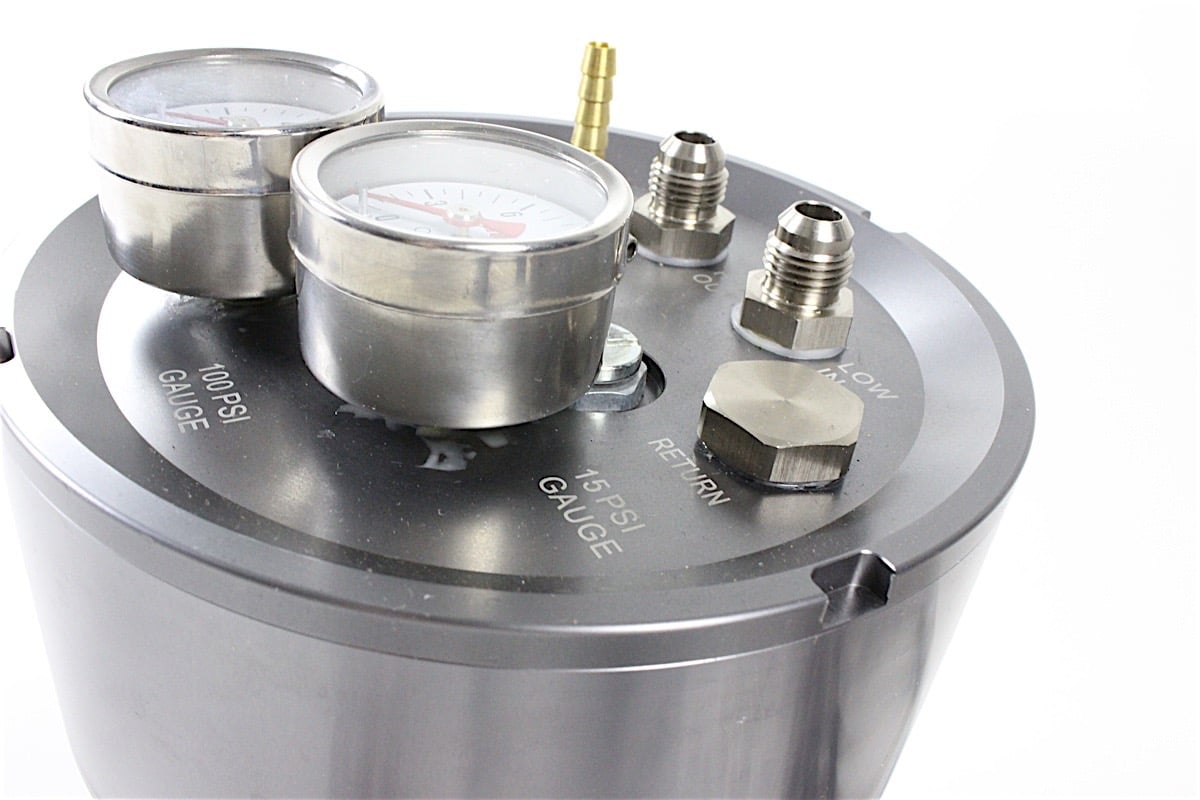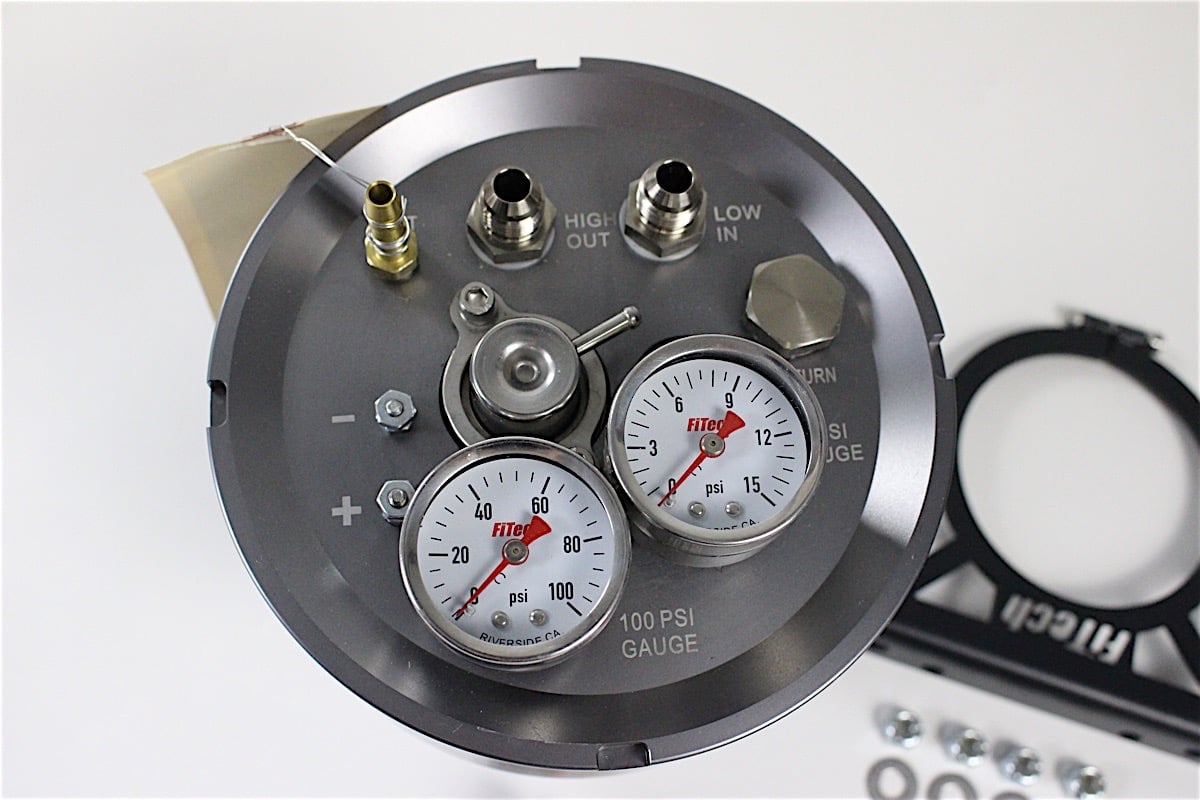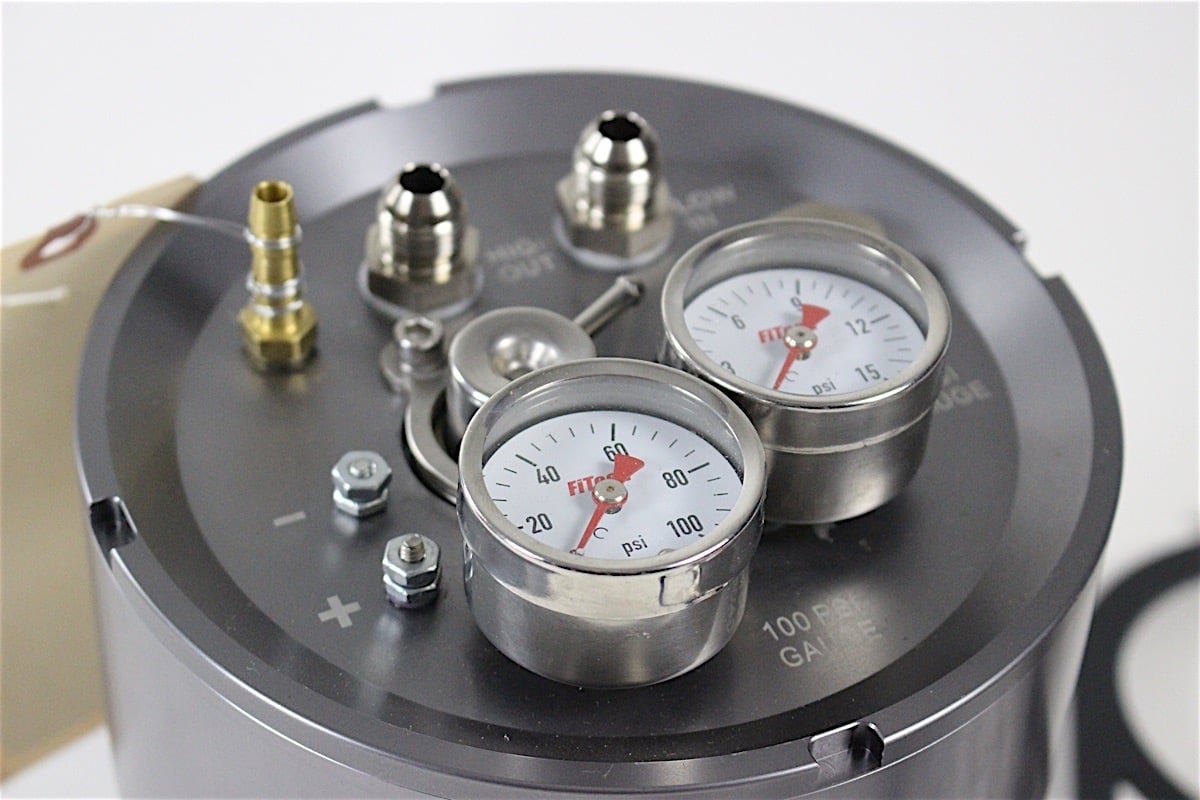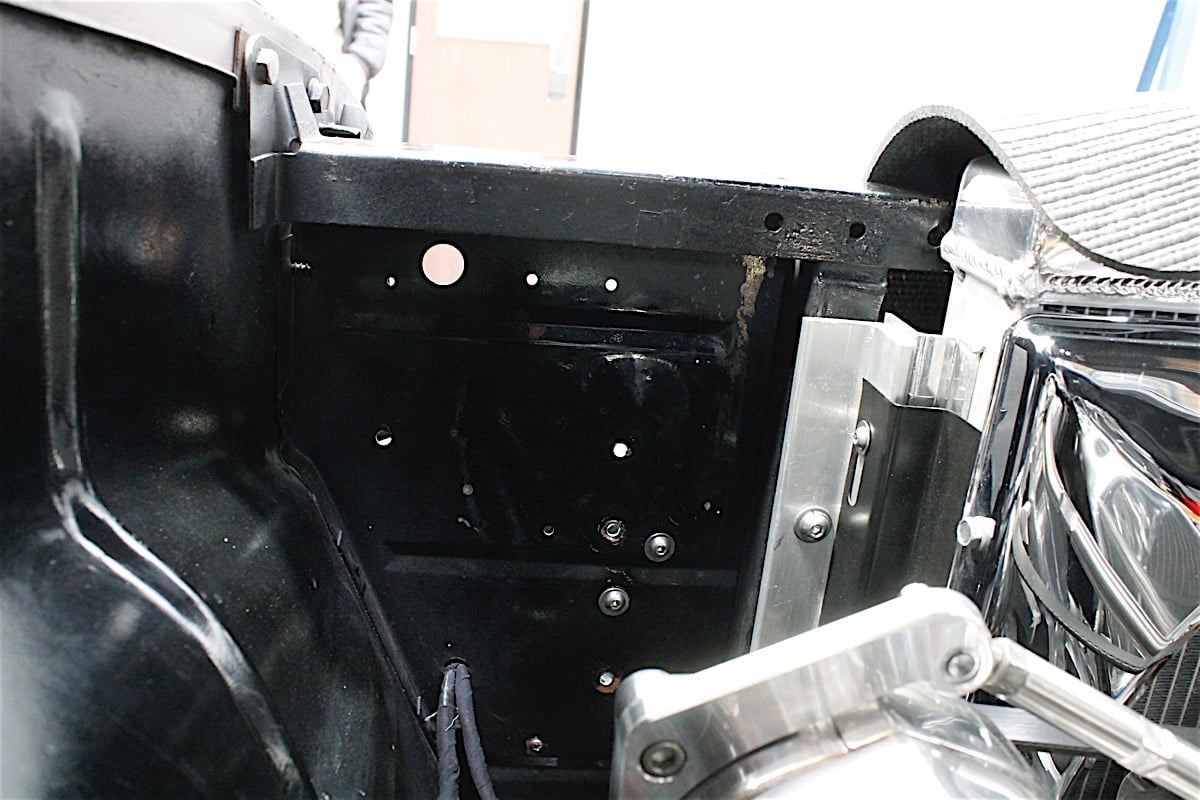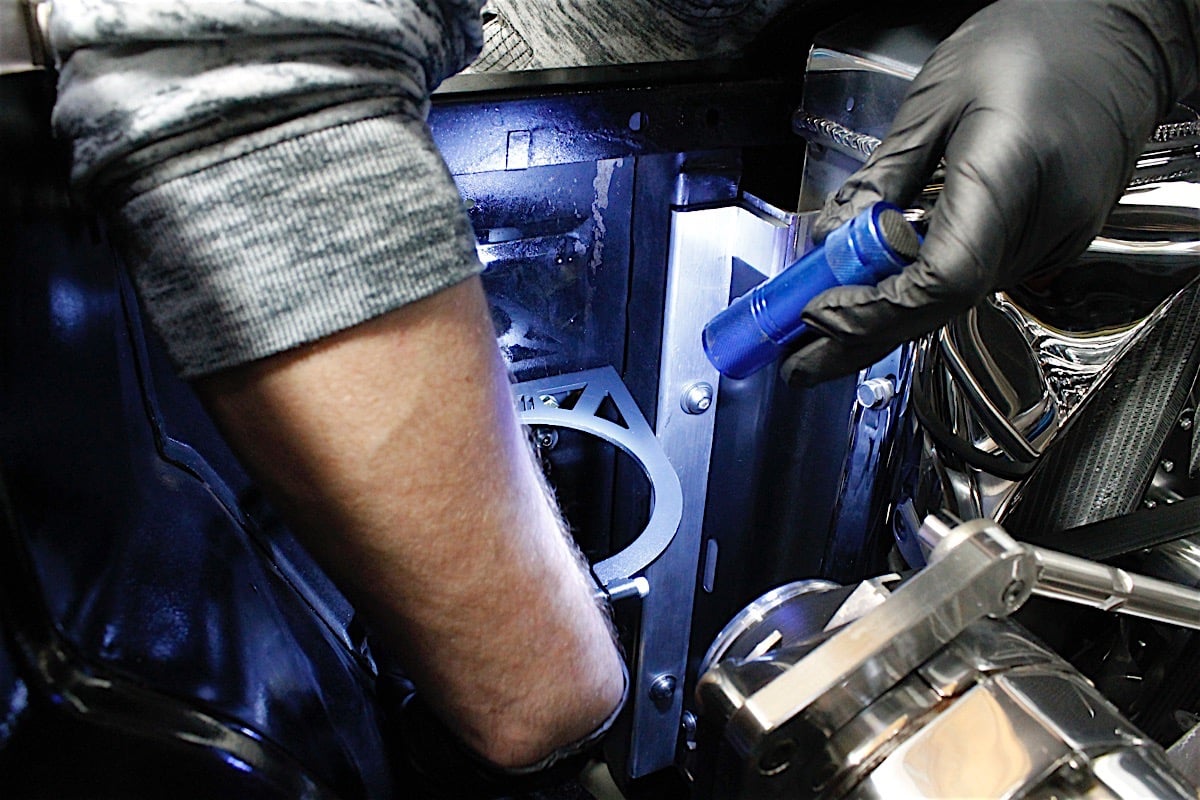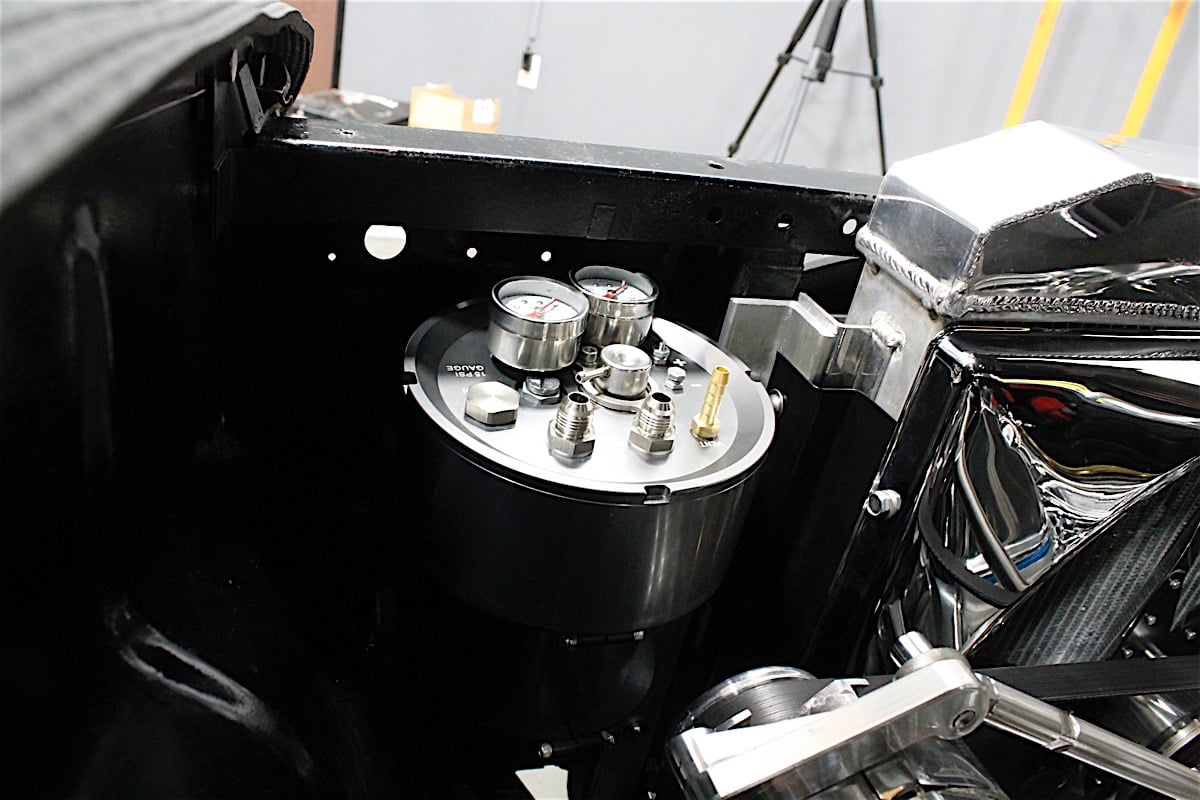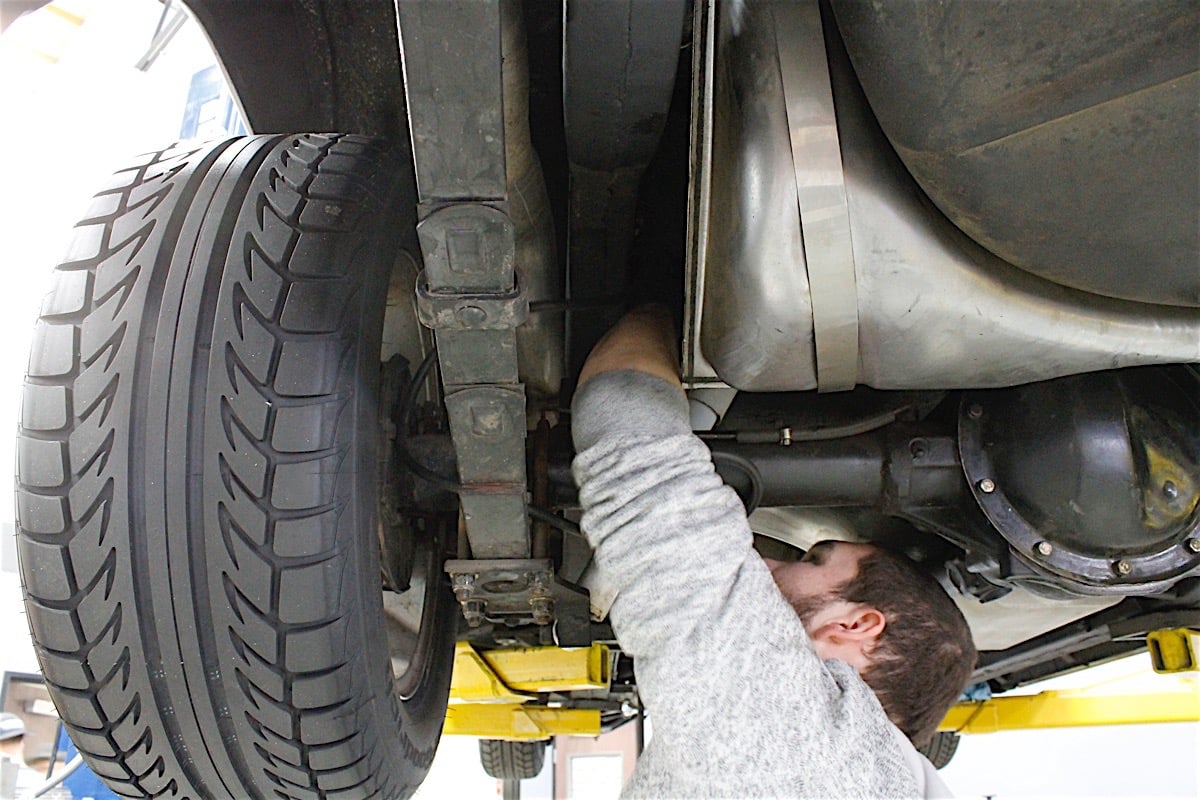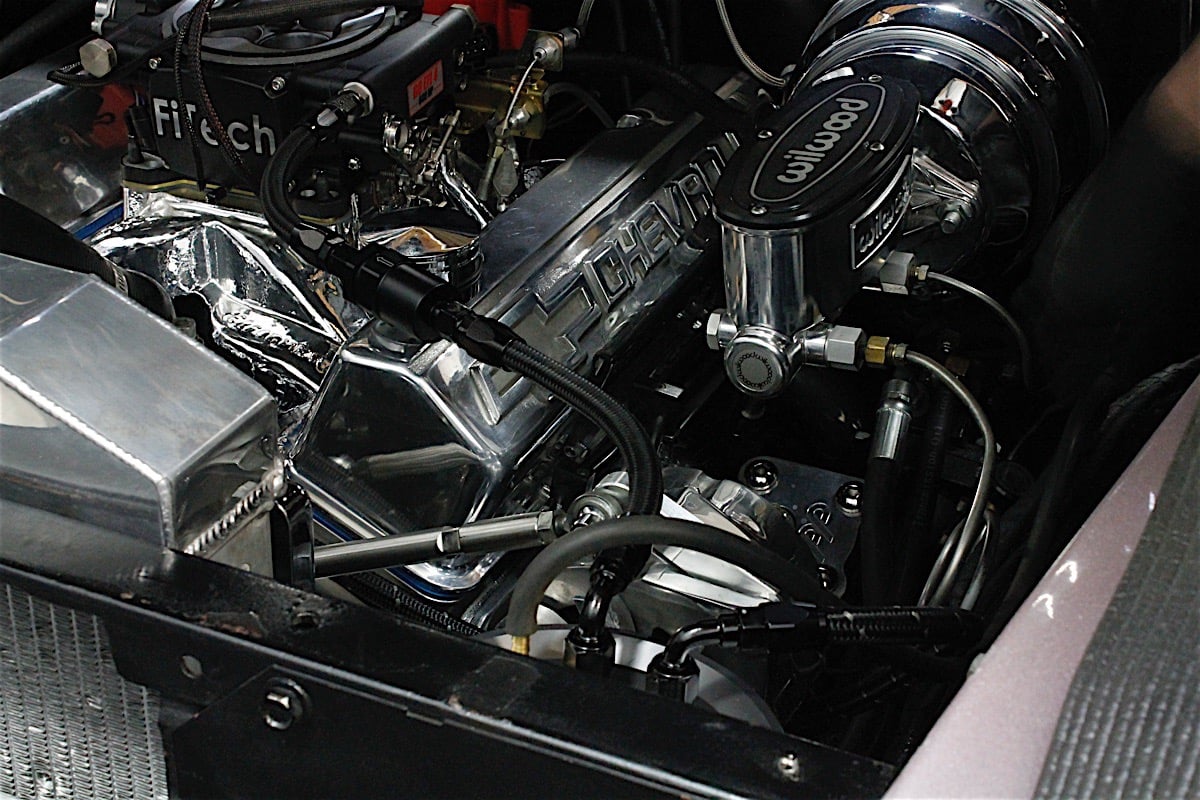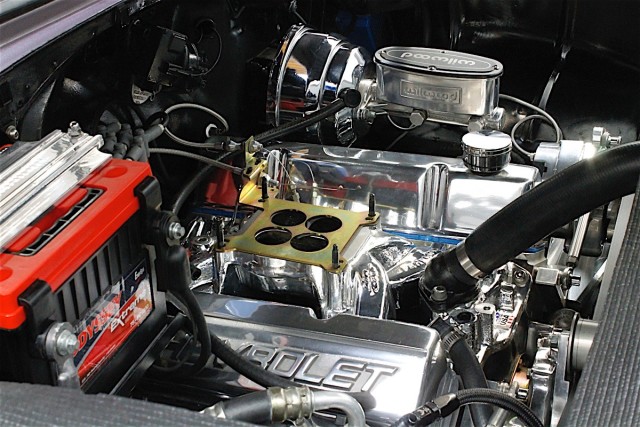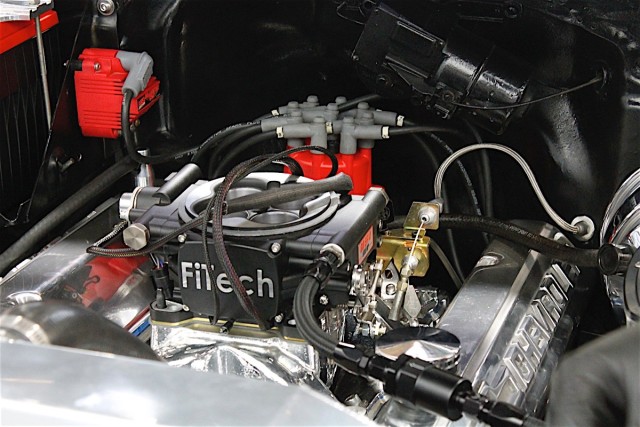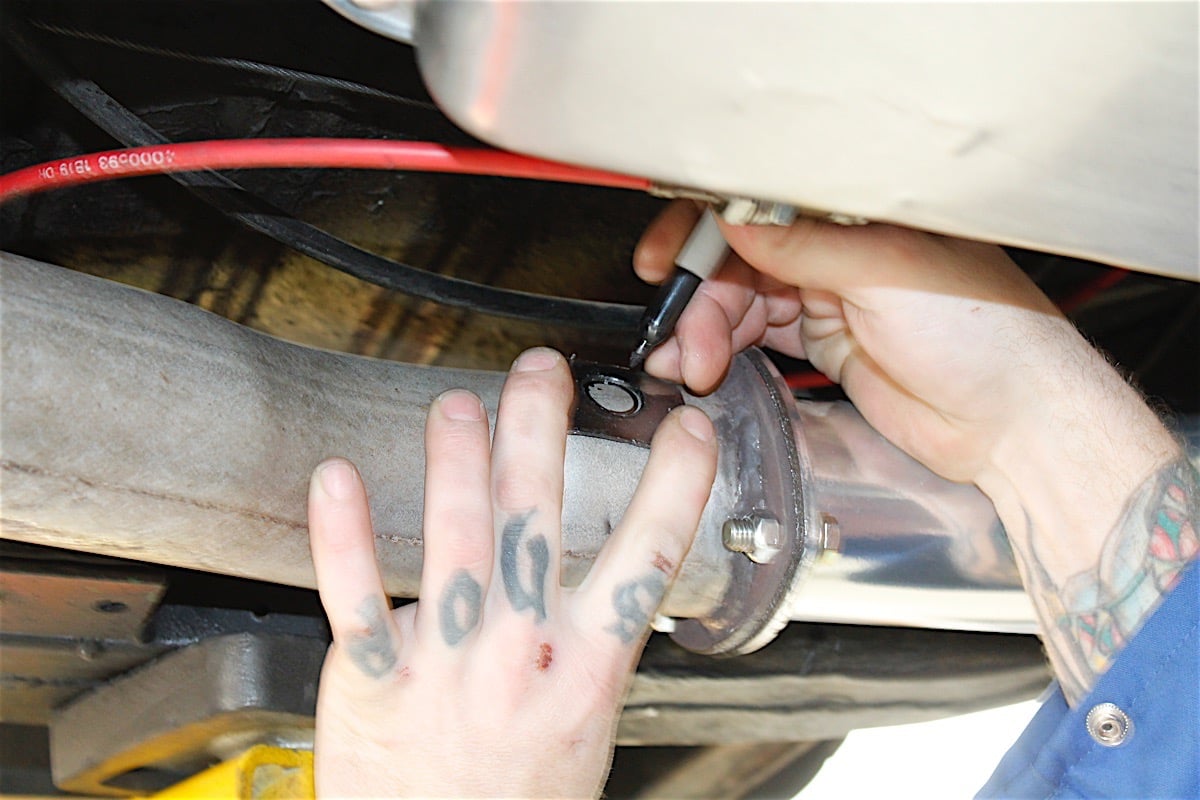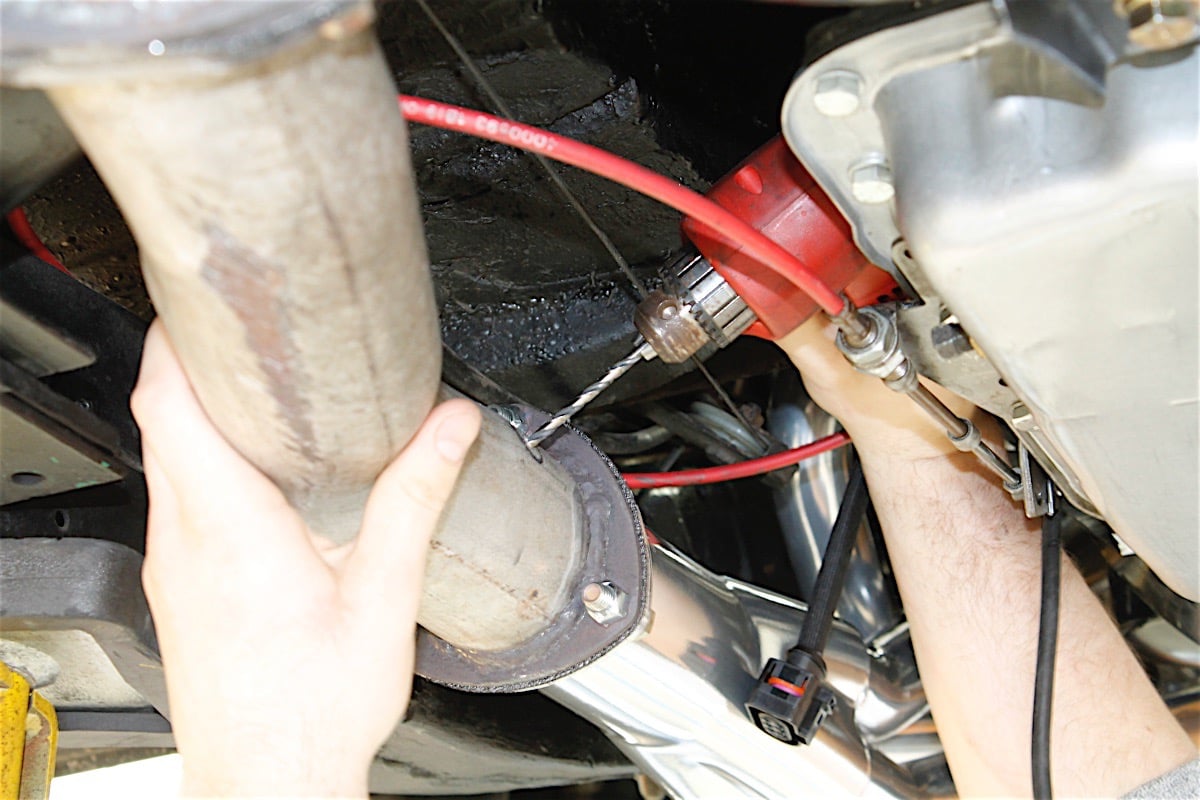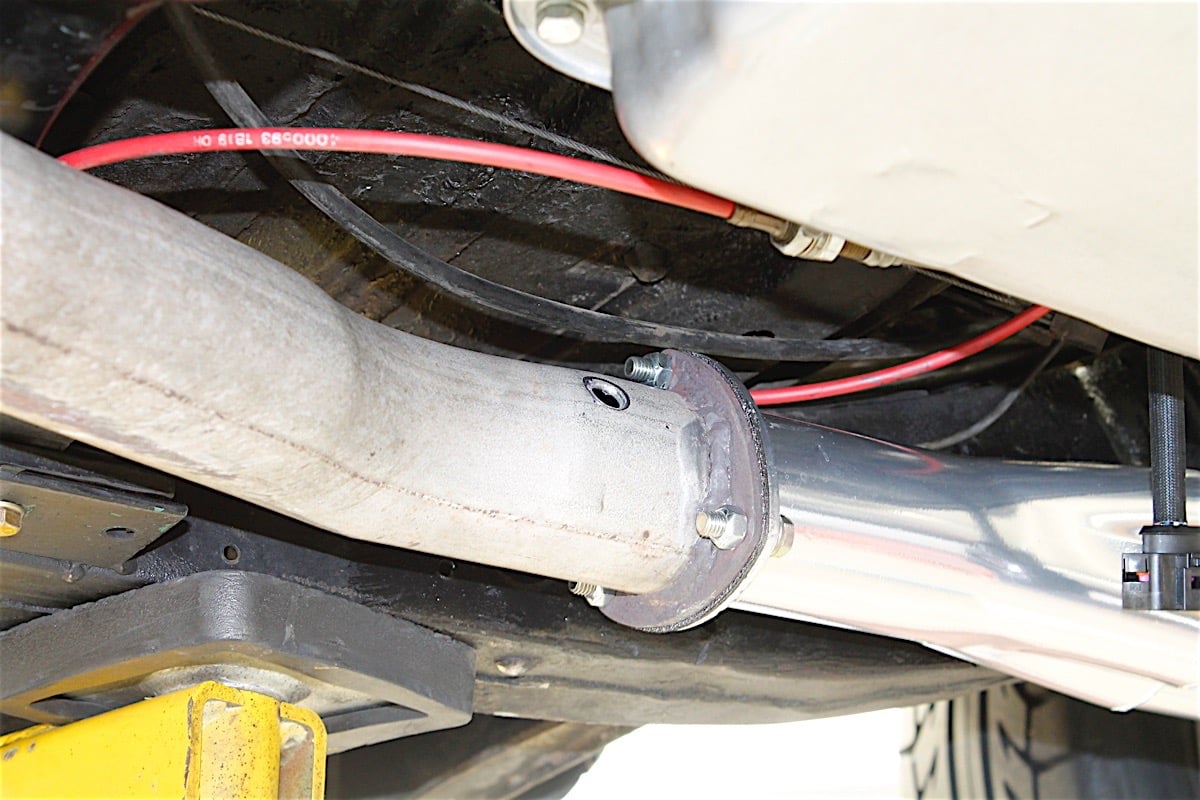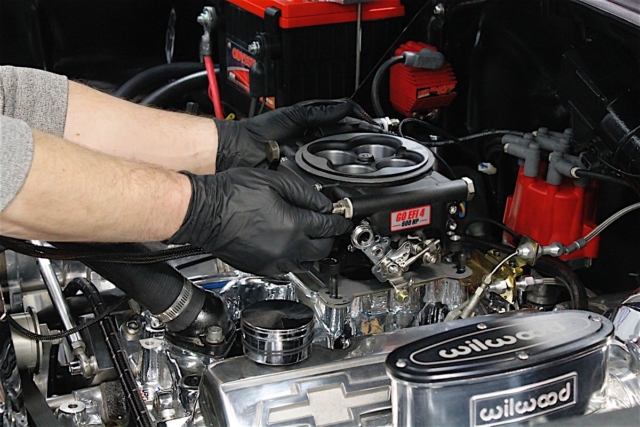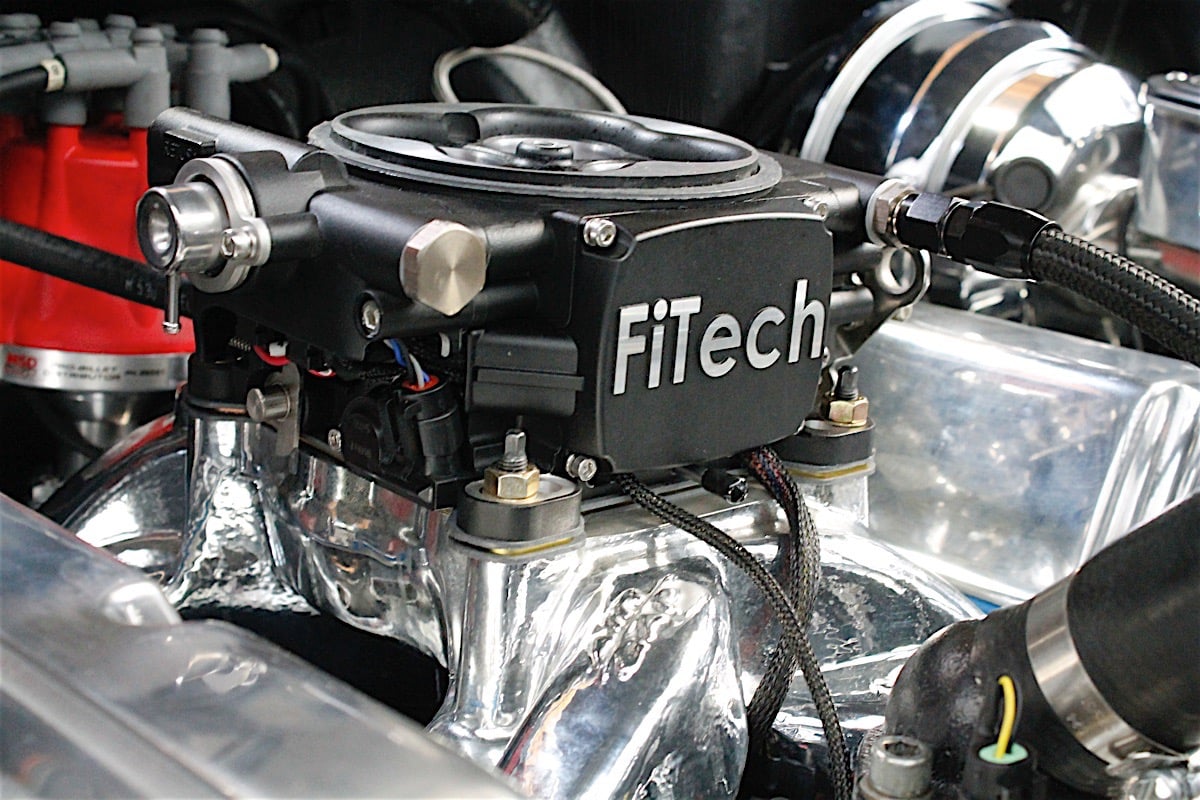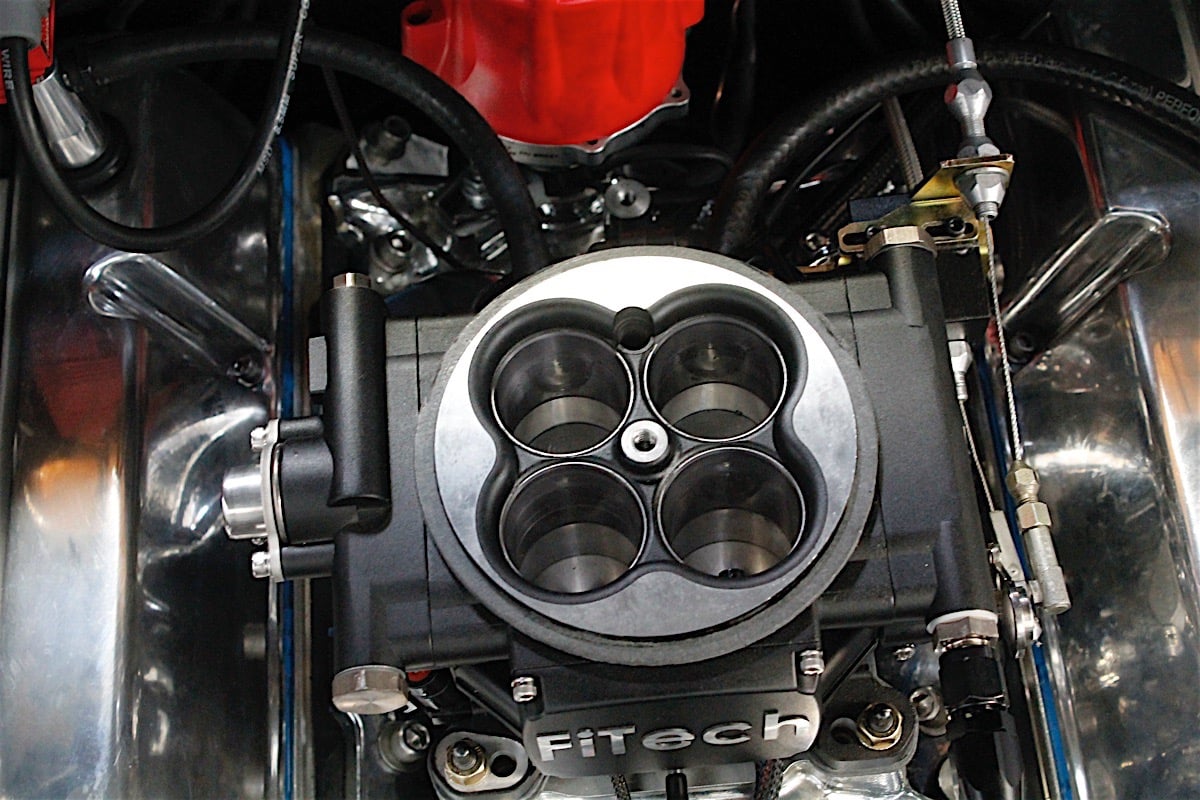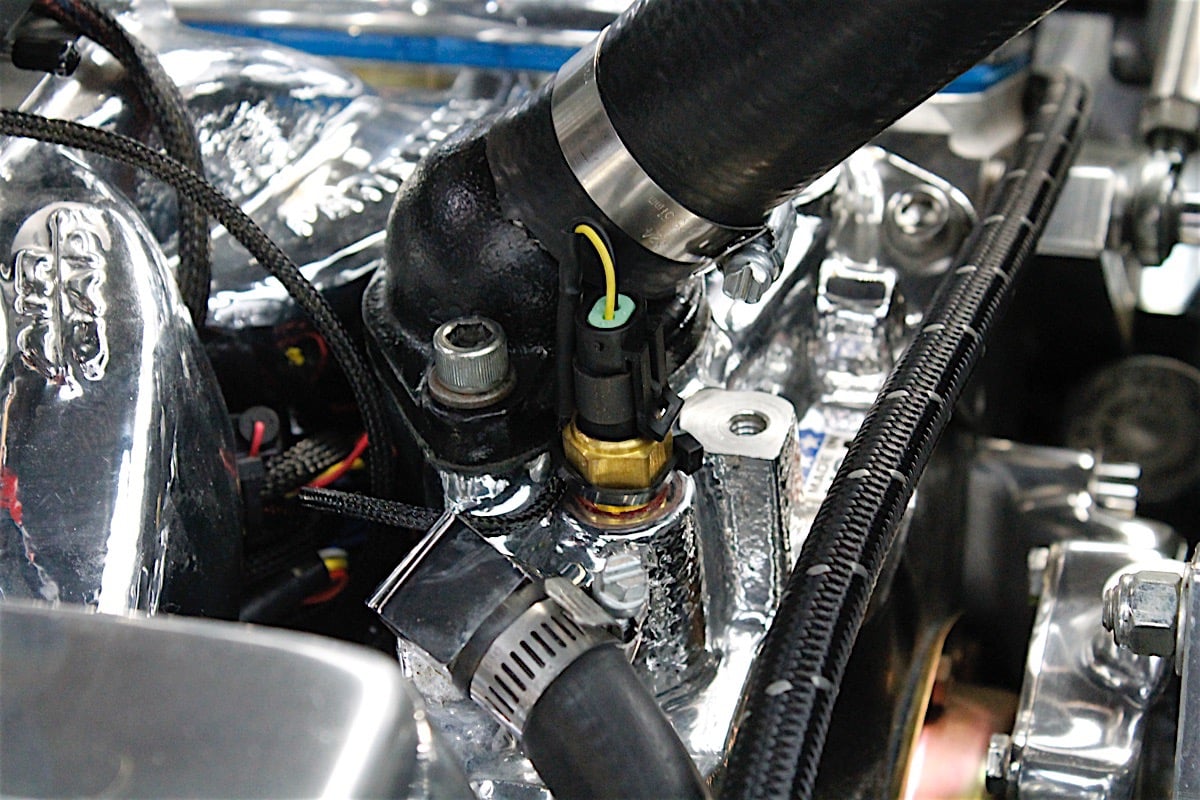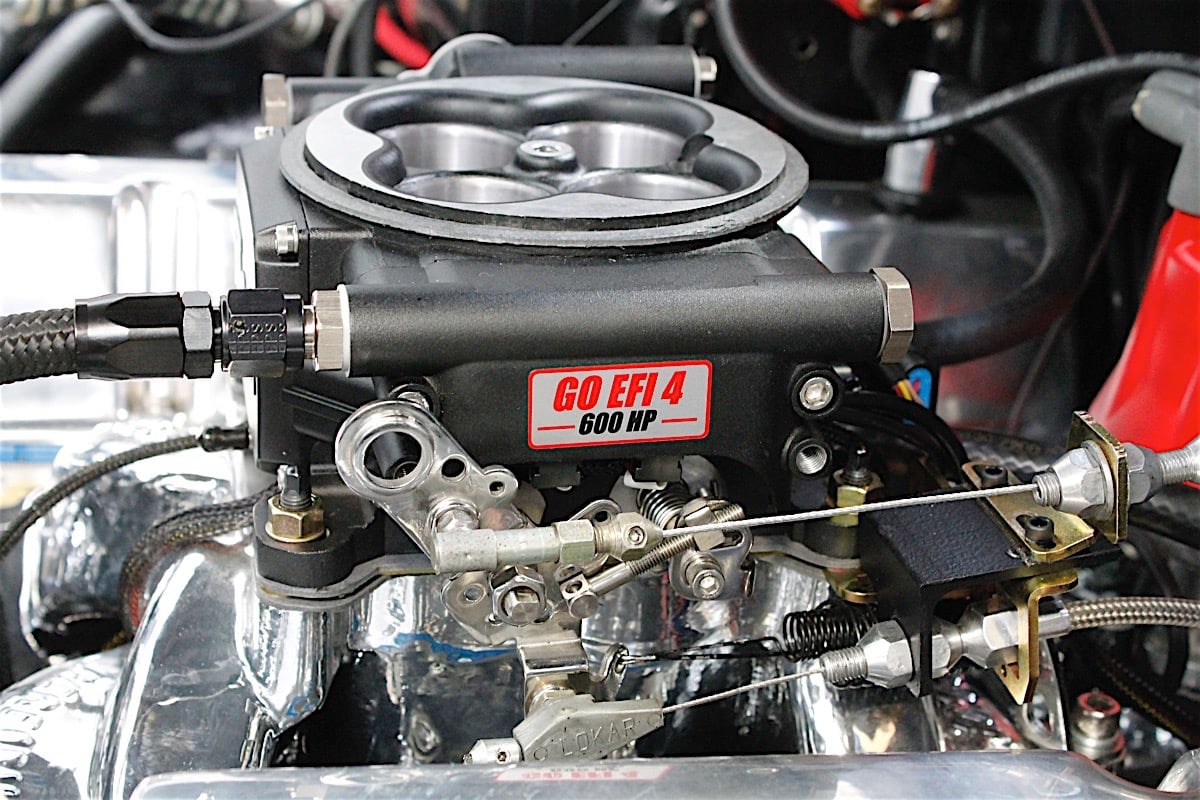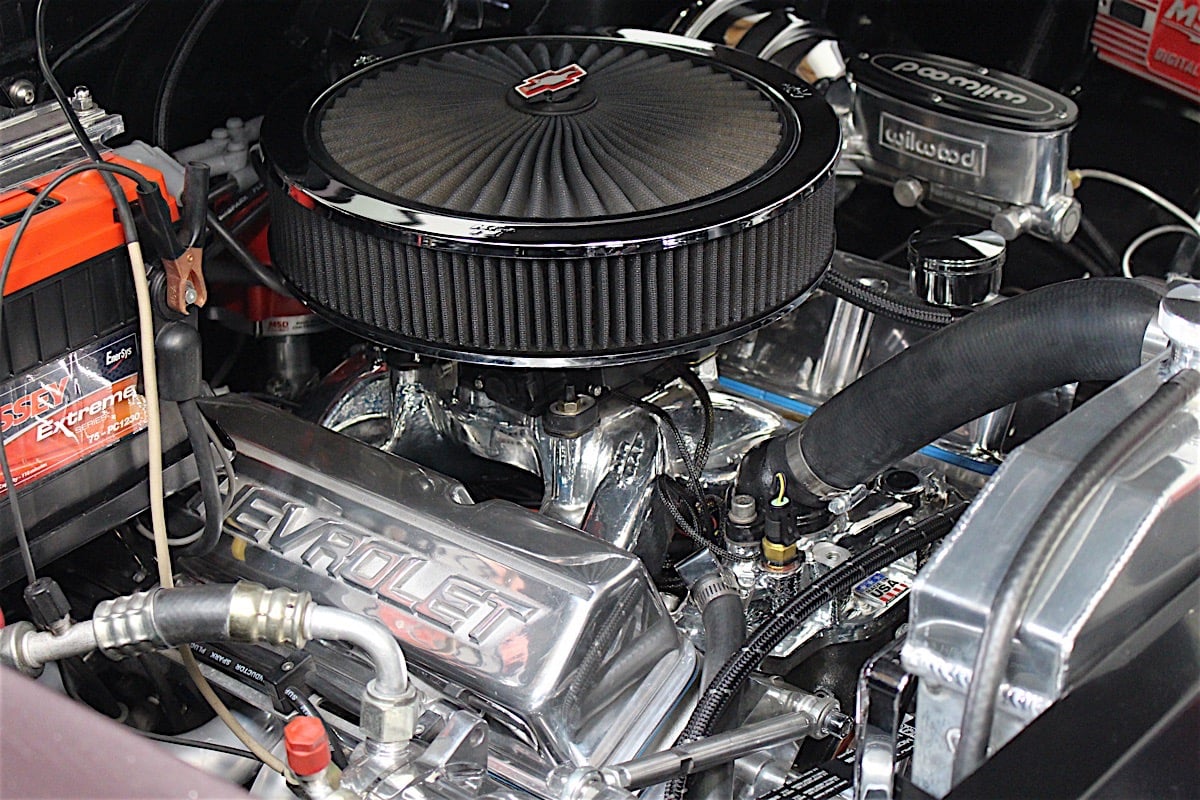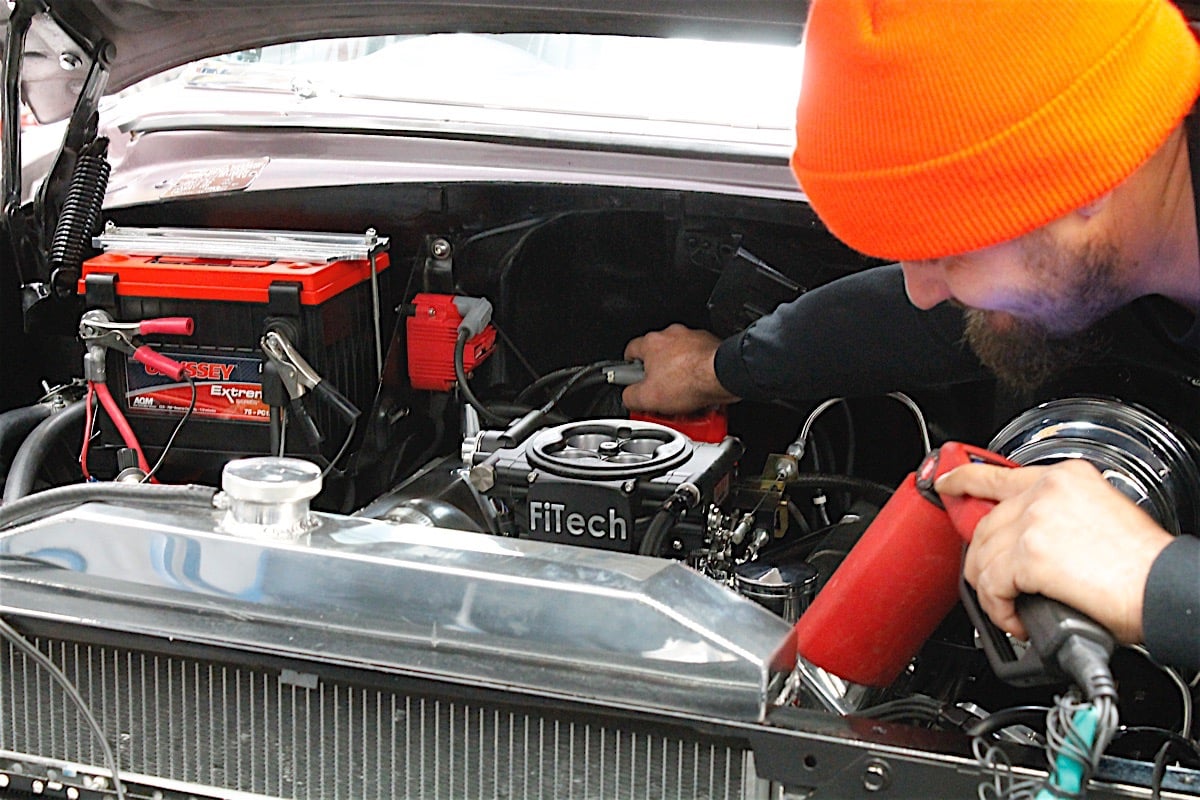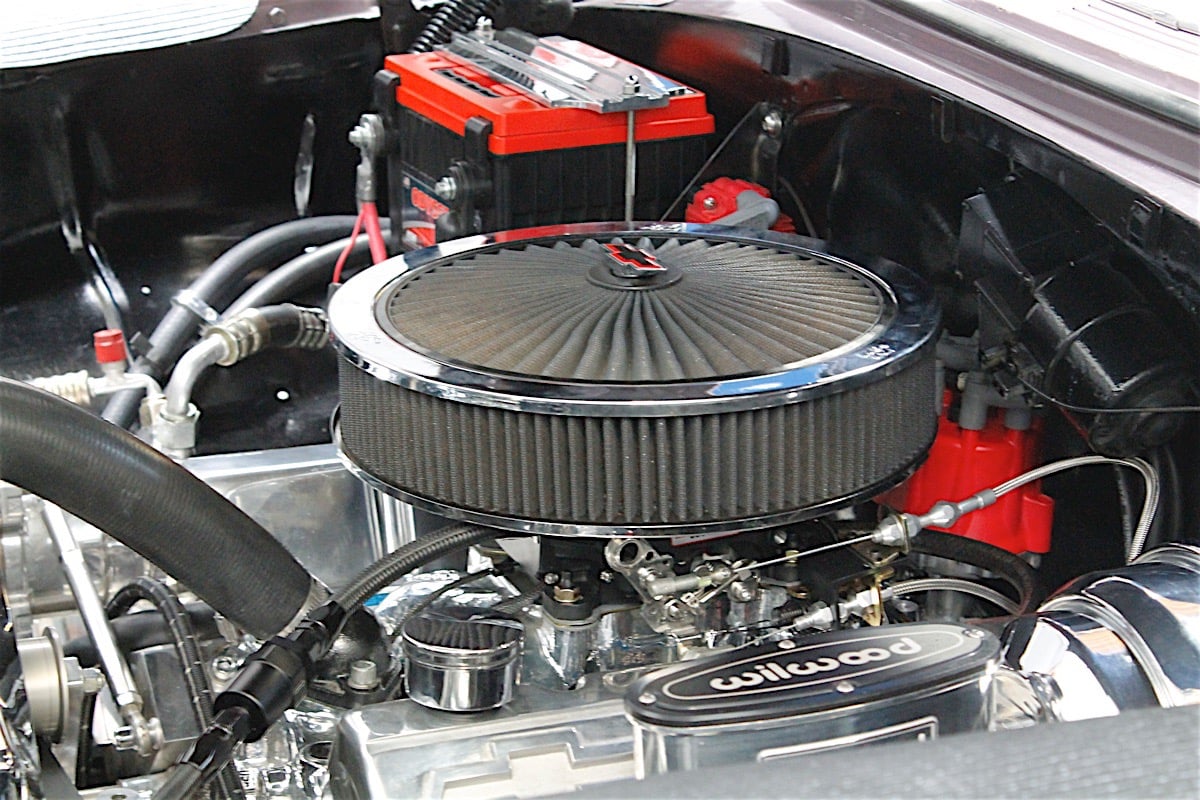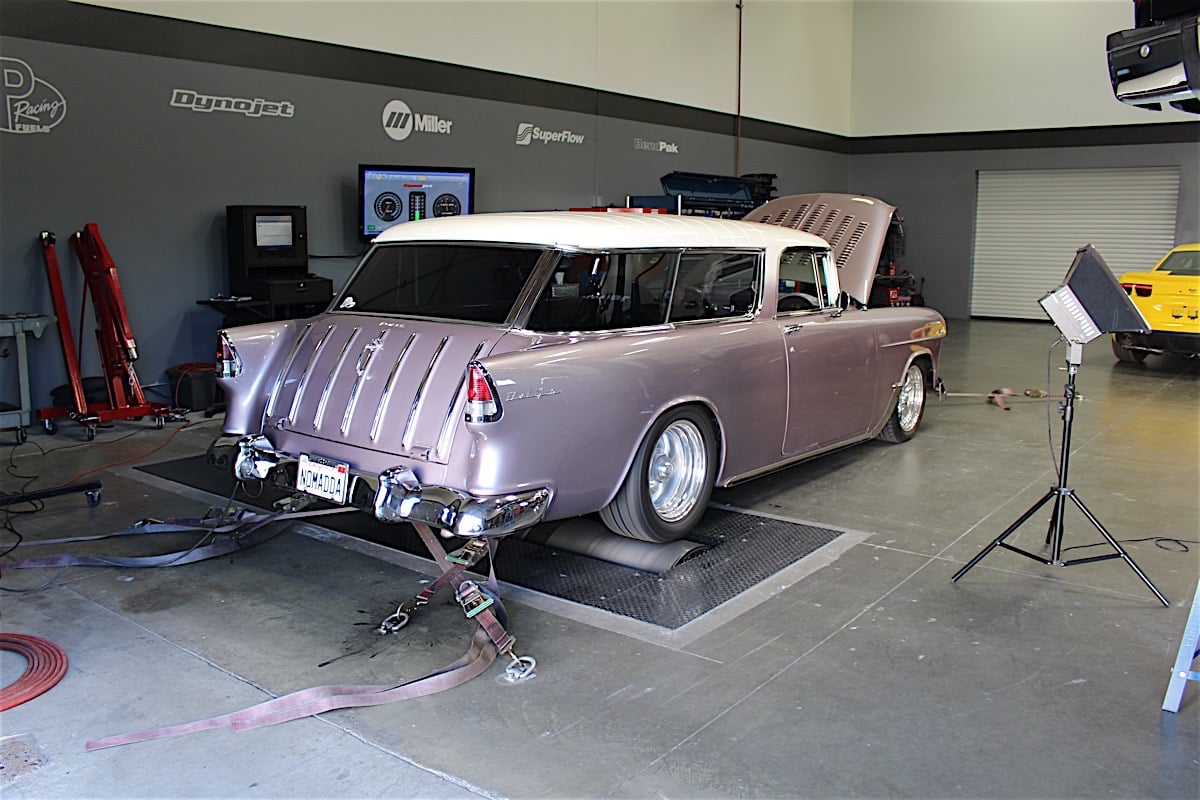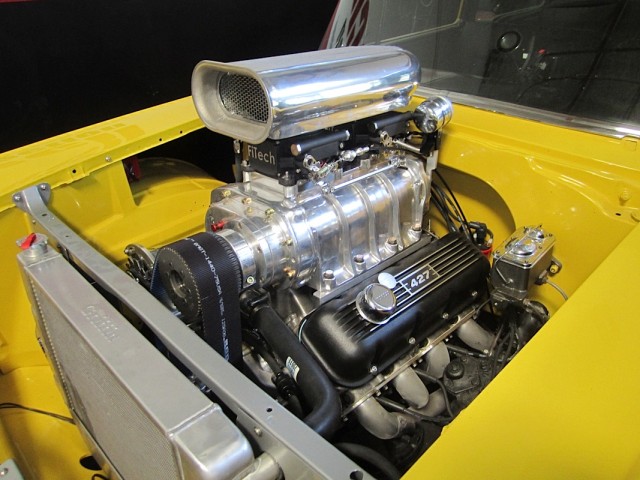Unless you’ve been driving a Prius every day and snacking on tree bark and trail mix, then you know that EFI conversions have been one of the hottest upgrades you can do on a classic car or truck. What used to take hours scrounging around a wrecking yard, trying to find all of the right components, has now become a one-box kit that includes everything needed to put you on the path to better starts, smoother idle, improved throttle response, and increased fuel economy.
While many EFI systems seem to be competing with other EFI’s systems, FiTech Fuel Injection [2] is aiming to price its base EFI conversion system to be competitive with the price of a new carburetor. Its goal is to make EFI conversions so simple that all you have to do is bolt the unit up, connect a few wires, and you’re set.
With new base systems like the EFI 4 throttle body conversion currently selling for $995.00, FiTech President Ken Farrell says there are plans for entry-level pricing a bit lower than that – how does $795 sound? Beginning with just a couple of EFI systems as little as two years ago, FiTech now has systems supporting engines with up to 1,200 horsepower, dual quad, nitrous, boosted, and even E85 (with some adjustments that can be made on the handheld controller).
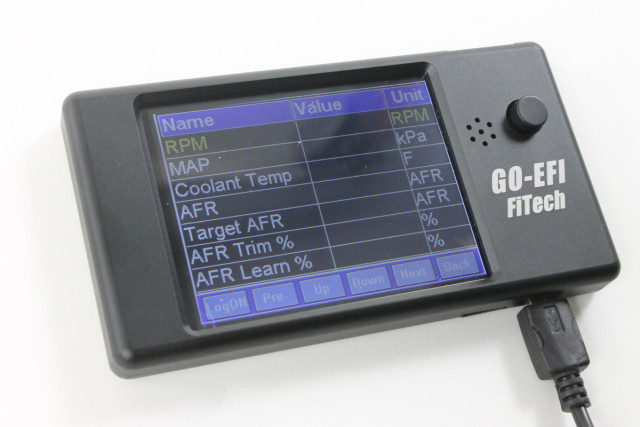 [3]
[3]High tech? Sure, but FiTech has done all the work for you. You only need to answer a few questions and set a couple of parameters, and you’re ready to Go-EFI.
Your First EFI Conversion: What Do You Need To Know?
While the carburetor market hasn’t died down, there are still plenty of gearheads out there that FiTech wants to convert. The street rod and musclecar communities are becoming more and more aware of what’s out there, and yet there is still that age-old assumption of using a laptop to make your EFI conversion work properly. FiTech wants its potential customers to know that they have done all of the hard work for you, and that you don’t even need to own a computer, let alone a laptop, to convert to a FiTech EFI system.
We brought in Mark Thomas and his 1955 Chevrolet Nomad to convert him over to EFI. With a potent SBC putting down a little over 294 horsepower to the rear wheels, Mark had a few questions for Farrell and Schmidt when he brought his car in. As a first-time carb-to-EFI recipient, he was concerned about how much would need to be done with regards to the ignition, timing, and fuel delivery system. We assured him that he was in good hands with guys from FiTech.
The first concern with an EFI conversion is whether it will actually be a direct replacement for the carburetor. Of course, things like fuel pressure, wide band O2 sensor, and an ECU are part of the conversion, but FiTech takes care of these items in its kits. There is additional wiring, but that, too, is part of the kit and all wiring is terminated where it will plug into a sensor or fuel injector, and it’s covered with a protective sleeve.
FiTech Go-EFI 4
- Die-cast throttle body
- Hand-held controller
- Windshield mount
- Four hi-flow 600 HP injectors
- Built-in pressure regulator
- 2.5 BAR internal MAP sensor
- Throttle position sensor
- Idle air control
- Coolant temp sensor
- Wide band O2 sensor
- O2 bung kit
- -06AN Fuel inlet fitting
- Gasket kit
“Limitations are usually based on customer comfort level and the system purchased,” Farrell said. “Our Street systems do not have timing control and use just a tachometer signal for RPM output.”
For a first time EFI installer, basic knowledge and skills would be the requirement to install your own system. If you can install a carburetor, water pump, or fuel pump, you’ve likely got the minimum skillset necessary to convert to a FiTech Street EFI system.
The next step up, the Go EFI system, has timing control as well as fuel control, so the customer should do only what they are comfortable with. Farrell said, “If he is not using boost or nitrous, then letting the distributor control the timing is really a good option for simplicity.”
The basic connections for the EFI are a hot 12 volts, switched 12 volts, chassis ground, tachometer input, and an ignition input that sees 12 volts during cranking and run conditions. As for the ECU, FiTech mounts it directly to the throttle body, and all necessary sensors are either part of the throttle body – like air temperature, throttle position sensor, idle air control valve, and fuel injectors – or they are included, such as the wide band O2 sensor and the cooling temperature sender.
The fuel command center is a self-contained sump tank that stores fuel for the EFI, meaning fuel slosh won't affect drivability – even with the factory fuel tank.
FiTech Fuel Command Center
One component of the FiTech system is the fuel command center, which is essentially a fuel sump tank that houses the high pressure fuel pump and a pair of pressure gauges. The fuel command center is fed by the low pressure fuel pump (either inline electrical or mechanical) used by the carburetor as a lift pump to fill the reservoir with fuel. Inside, the high pressure fuel pump feeds the fuel injectors on the throttle body.
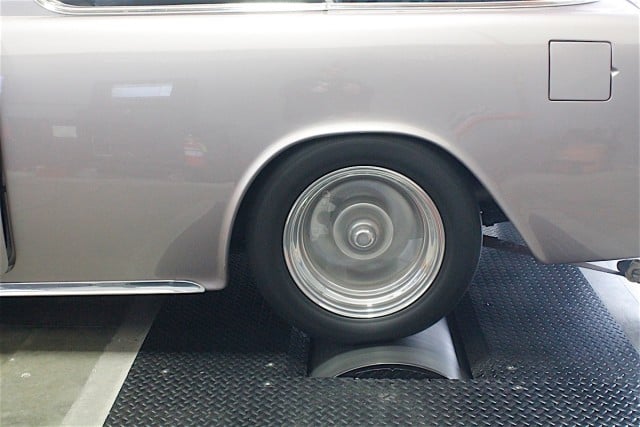 [16]
[16]We brought the Nomad in the shop for the first time to help plan out the EFI conversion, and also to get some base numbers with the carburetor installed.
When we first brought the Nomad into the shop, it was not to install the EFI system, but to have an opportunity to plan out the installation. That’s an important aspect of any upgrade, and with an EFI system it’s highly recommended so that the install can be planned out, as this can essentially can save a couple to a few hours, especially when it comes to mounting the fuel command center.
If there isn’t enough room under the hood to mount the fuel command center, planning ahead will save time when it comes to the installation in case some things need to be moved. The fuel command center isn’t a very large component, but it does store fuel so that the throttle body is never starved. While fuel may be sloshing around in the stock, non-baffled tank, that won’t be a problem for fuel injection because the fuel command center stores enough fuel to supply the throttle body, much like a bowl stores it for a carburetor.
We found a perfect location for the command center, and mounted it away from excessive heat or moving components. It can be mounted anywhere under the hood or even on the chassis. A vent line from the command center to the filler pipe is the only connection back to the fuel tank.
While this component isn’t absolutely necessary in order to install a FiTech EFI conversion, it saves a lot of headache working with a factory tank that is not baffled to keep fuel near the pick-up. The alternative to the fuel command center would be to install an aftermarket, in-tank fuel pump kit, or an aftermarket tank that is baffled to avoid fuel starvation issues.
With the fuel command center mounted, we then mapped out the fuel lines and where to route them. The throttle body is adaptable, so if the fuel command center ends up on the right or left side of the engine bay, the fittings can be swapped out to connect the high pressure fuel line to that side of the throttle body. From there, it was time to pull off the old carburetor and begin the process for the FiTech EFI conversion.
FiTech includes a pair of clamps and a bung to install the O2 sensor. Because this requires a hole to be drilled into the exhaust pipe, the included plate can be clamped into place or welded, allowing you to attach the O2 sensor so you can drive to a shop to have the welding done. Alternatively, you can choose to keep it clamped to the pipe without welding.
You don't need to be able to weld to install the O2 sensor because a clamp kit and gasket will suffice. Welding, however, provides a more permanent installation.
We first marked a hole for the pipe, then drilled the hole to fit the sensor, and tack-welded the plate into position before welding the circumference of the O2 plate. The FiTech system uses the latest Bosch-style six-wire wide band sensor, which will help the ECU to make adjustments as you drive.
The throttle body bolts directly to a 4150-style intake manifold, and the throttle lever is the typical carburetor-style that can accept most throttle cables and kickdown levers. Depending on your existing setup, you may need to be a little creative with your cables/levers, but much of that is based on the cable system being used. It will operate in similar fashion as it does on a carburetor.
Electrical wiring is labeled and covered, with pre-terminated ends for the O2 sensor, temperature sensor, and all throttle body connections. The supplied ring terminals and wiring for the fuel command center enables cutting the wiring to length, and the hand-held controller plugs directly into the harness. The controller can be mounted anywhere inside the vehicle, if desired, and includes a mount to hold the controller in place while adjustments are made.
Most of the included sensors are mounted on the throttle body. The temperature sensor mounts in the intake manifold, and the harness plugs directly into each sensor for a clean installation.
With all of our wiring completed, the next step was to fire up the car, let the computer self-learn and make some adjustments, and line up on the rollers to see where we were at. Our initial run prior to installing the FiTech EFI system showed us a very fat fuel curve. While it put down some decent numbers, it showed us that we were a little too thick on the fuel and needed to lean it out a little.
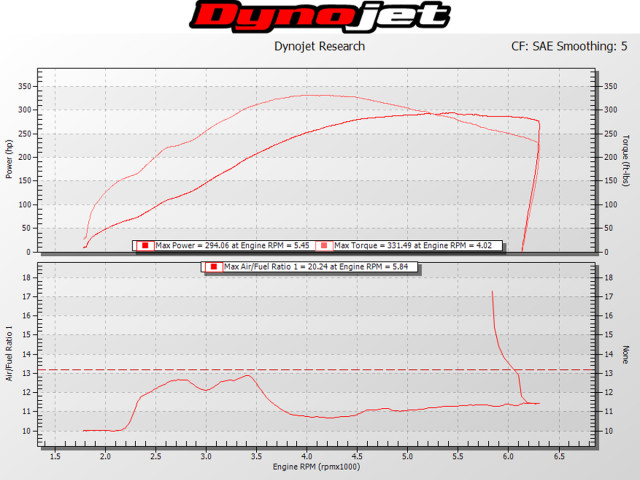 [35]
[35]The baseline run before the EFI conversion put down a respectable 294.06 horsepower at the rear wheels, and 331.49 lb-ft of torque.
Final Dyno Run And Results
With our first pass on the dyno, we were sitting at about 294.06 horsepower at the rear wheels, and 331.49 lb-ft of torque. It was pretty potent, but what concerned us was the air/fuel ratio (A/FR). Sitting at about 10:1 at idle, off-idle jumped to about 12:1 and then it richened up to under 11:1 and stayed well under 12:1 for most of the run when the throttle was pressed. That’s better than being too lean, but we wanted to see if we could clean up that fuel ratio and get a couple of more ponies at the wheels.
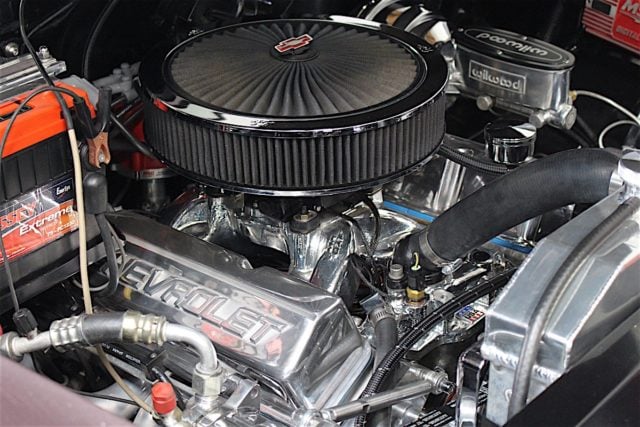 [36]
[36]At first glance, you’d be hard pressed to identify the FiTech EFI system under that air cleaner.
EFI conversions are, for the most part, done for drivability, fuel economy, and for smoother idle and better starts. We brought the Nomad back on the rollers after a little bit of driving to allow the ECU to learn and make some adjustments. Almost immediately we saw an improvement in the A/FR.
Farrell recommends that right out of the gate the vehicle should be driven relatively normal to give the ECU time to learn. As a self-learning ECU, the feedback from the wide band O2 sensor will help the ECU make adjustments based on things like A/FR, throttle position, air temperature, and engine speed.
As you drive, the computer is constantly making adjustments to provide the best combination. After a few miles, Farrell says you can drive it hard, and the computer will continue to learn. “The system will learn and adapt in minutes and hit all the points in a few miles of driving, as long as you hit all load points and RPM points,” he said. “We send the ECU with a really good setup,” Farrell said, “but you can change those A/FRs to optimize your tune. All cams are different so it’s a loaded question to ask what is the best setting.”
The system will learn and adapt in minutes and hit all the points in a few miles of driving, as long as you hit all load points and RPM points. – Ken Farrell, FiTech Fuel Injection
When the Nomad fired up and began to spin the rollers, we were able to come away with 311.47 RWHP and 353.56 lb-ft of torque. But more importantly, our A/FR was coming in at a leaner setting and during the heavy throttle conditions we saw a more respectable A/FR that was in the 11-12:1 range. With the FiTech EFI conversion, Thomas was excited seeing an increase of 17.41 RWHP and 22.07 lb-ft of torque.
As we mentioned, EFI conversions aren’t necessarily going to guaranty an increase in power or torque, but cleaning up the A/FR and running more efficiently, our Nomad was able to put down better numbers and better throttle response, making this first-time EFI convert a very happy owner.
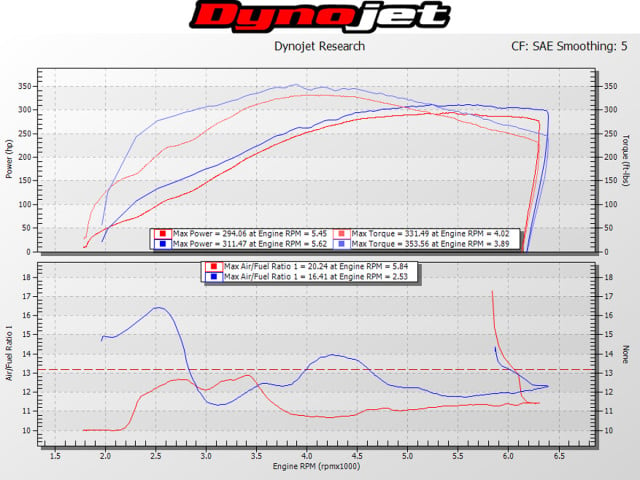 [40]
[40]After allowing the FiTech EFI to learn a little from the wide band O2 sensor’s readings, the Nomad upped its street credo by putting down 311.47 horsepower and 353.56 lb-ft of torque, an increase of 17 RWHP and 22 lb-ft of torque. A more efficient engine, can be a more potent engine.
We’re told FiTech will release its new $795 EFI system beginning in April of this year, and they have several other systems supporting 300 to 1,200 horsepower on their website [41]. Keep up with news and the latest events from FiTech by visiting and liking their Facebook page [42].
